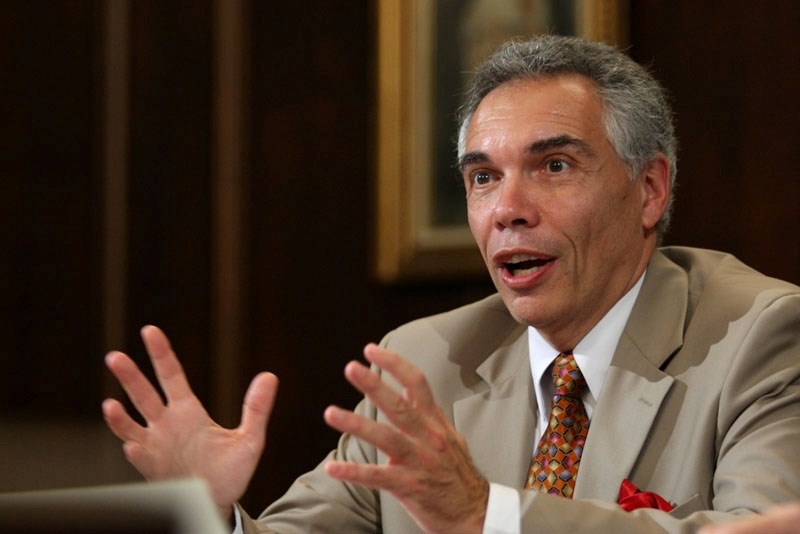Magic and chemistry share a tight bond for Joe Schwarcz.
It all started when he saw a magician perform at a birthday party when he was in Grade 6, recalls the celebrity professor. The magician somehow made three lengths of rope become one, and did so by sprinkling them with a "magic chemical."
"That's what got my attention," says Schwarcz, a McGill University chemistry professor known for his appearances on the Discovery Channel. As soon as he could, he went to a library and started pouring over tomes of magic and chemistry.
Schwarcz is holding a talk on chemistry this Thursday at the Telus World of Science in Edmonton as part of the International Year of Chemistry.
It's the first of many events planned for the Capital region to celebrate science, says Frank Florian, the centre's science director. "Chemistry is involved in everything we do," he says, from cooking to cleaning to eating, so it's something most people have an interest in. It also creates eye-catching fireballs and explosions that attract kids to science. "It's something that still has a bit of magic associated with it."
But sorcery can be a source of suspicion. Recent scares involving chemicals such as bisphenol A have given the science a bad rap, Florian says. "Is this stuff really good for you?"
Everyday magic
Schwarcz's talk addresses that question directly. He recalls one article in Time magazine that had a nutrition professor who, when asked whether she preferred butter or margarine, said, "I would rather trust a cow than a chemist." That sent a message that chemists are nefarious creatures that toss about dangerous substances, he says, and that natural substances are safer than man-made ones.
Total myth, he says. "Whether something is dangerous or not does not depend on whether it is natural or synthetic. It depends on what it is." Chemists need to get out and explain their science to the public so they can properly evaluate the risks of the substances they take.
Take toast, for example. Toast is created by heat, which causes an oxidization reaction that breaks proteins into amino acids to change taste, texture and colour. "Any time you burn any organic matter, you produce nasty byproducts," he notes, including carcinogens. However, those byproducts are in such tiny amounts that they're not worth worrying about.
One reaction you should worry about involves cleaning products. Many people will accidentally mix vinegar and bleach when cleaning their toilet, Schwarcz notes, which can react to produce deadly chlorine gas. "The next thing that happens is they're overcome by the chlorine fumes they've generated."
Chemistry has lead to great advancements in many areas like energy production and agriculture. "Our food supply today is better and cheaper than any time in history." It's also led to some problems, he admits, such as phosphorous pollution of rivers, but that's due to the overuse of the chemical rather than the chemical itself.
Chemists can now detect substances at levels as low as a part per trillion, Schwarcz notes — an incredibly low and usually harmless level. "Just because it's there doesn't mean it's harmful." They can also do reactions using just a millionth of a gram of material, which significantly reduces waste.
Chemistry might have the same flashy results as magic, Schwarcz says, but departs from it when it comes to secrets. "With science, you don't want to hide anything," he says, adding the fun of chemistry comes from understanding the magic trick rather than hiding it. "Chemistry is not something to be feared. It's something to be used."
Schwarcz's talk is at 7:30 p.m. this Jan. 27. Call 780-451-3344 for details.




